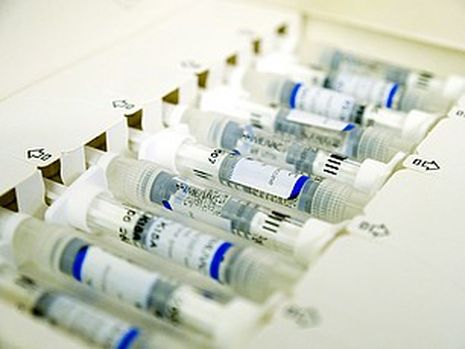An Introduction to Vaccine Challenges: Part 5
In his final instalment of this 5-part weekly series, Dr Hicham Bouabe discusses the need for what he calls a ‘universal vaccine platform’ to allow future generations to create vaccines quickly and easily.

Emerging, unknown viruses are frequently transmitted from animal reservoirs to humans, which requires their prompt isolation and characterisation, as well as fast generation of appropriate vaccines against them before they become epidemic.
The outline of vaccine challenges discussed in the previous parts of the series shows the broad number and complexity of variable factors in vaccine development. For a given pathogen, many different vaccine types need to be considered and tested. Experimental studies need to weigh up the pros and cons of the use of live attenuated or inactivated pathogens. Alternatively, the use of subunit vaccine as a purified pathogen-derived antigen or as a genetic sequence – DNA or RNA – encoding the antigen.
“One ‘universal vaccine platform’ should be developed and standardised for all infectious microorganisms”
In addition, each combination of a vaccine type with a given adjuvant and a particular administration route needs to be tested for vaccination efficacy and safety. The impact of the immunological background of individuals and the frequency of antigenic shift of the pathogens should also be considered. So, too, should be the risk of induction of ‘antibody-induced enhancement’ of infectious diseases by the vaccine candidate.
Hence, laborious – and often frustrating – preclinical studies (using cells and animals), which are costly in time, money and resources, are obligatory in order to come up with a single vaccine candidate that can be tested in human clinical studies. Clinical phases are even more time-consuming and costly than the preclinical phase. And not uncommonly, a candidate that was a success in preclinical studies fails in clinical studies, and the search for the vaccine starts again from the beginning.
Therefore, because of these scientific challenges, in addition to economic and political barriers including overregulation of science (which needs to be discussed in a separate article), the development of a single vaccine from preclinical to regulatory submission phase takes on average 10 years and has a failure rate of 94% (Pronker et al. PLoS ONE, 2013). The average development time of 10 years refers to one vaccine candidate, so if several candidates against a given pathogen fail successively – at different stages – the time until a vaccine candidate can be successfully licensed for use will be much longer than 10 years; vaccine development can easily take several decades.
“Any statement about developing and licensing a vaccine in few months against COVID-19, is more political than rational in nature.”
The development of vaccines can be sped up if the numerous ‘variable’ factors in vaccine research (discussed above) can be reduced and brought down to a common denominator. Ideally, one particular ‘universal vaccine platform’ should be developed and standardised for all (or at least the majority of) infectious microorganisms, especially for epidemic pathogens. Subunit vaccines, such as purified pathogen antigens, or even better, RNA sequences coding for the antigens, would be most appropriate for a ‘universal’ vaccine platform.
Such a universal vaccine platform should consist of a standardised formula, including one specific adjuvant type and concentration, and a particular delivery carrier – encapsulation – of the antigen, which have been well established to induce through a specific delivery route an optimal protective immunity across the population (independent of the immunological background of the individuals), without significant adverse effects.
In a universal platform, except for the antigen or antigen-coding RNA, all other components of the vaccine should stay constant. For each new infectious microorganism, only the antigen or the RNA sequence coding for the pathogen antigen should be exchanged. In this case the sole challenge would be the discovery of an immunogenic antigen from the emerging pathogen.
To date, we are still far from such a ‘universal vaccine platform’, and thus any statement about developing and licensing a vaccine in few months, or even in one and a half years under the current ‘conventional’ approaches, for example against the current circulating epidemic COVID-19, is more political than rational in nature. Realistically, a vaccine will not appear this quickly.
 News / SU stops offering student discounts8 January 2026
News / SU stops offering student discounts8 January 2026 Comment / Plastic pubs: the problem with Cambridge alehouses 5 January 2026
Comment / Plastic pubs: the problem with Cambridge alehouses 5 January 2026 Science / New year, new room, new you8 January 2026
Science / New year, new room, new you8 January 2026 News / Uni-linked firms rank among Cambridgeshire’s largest7 January 2026
News / Uni-linked firms rank among Cambridgeshire’s largest7 January 2026 Comment / What happened to men at Cambridge?31 December 2025
Comment / What happened to men at Cambridge?31 December 2025










